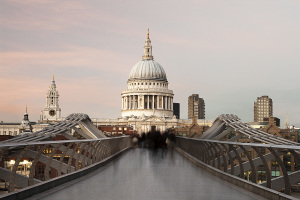Christmas History: The Pagan Traditions
Every holiday has a past. Christmas is no different. The day now known for manger scenes, Santa Claus, and gift-giving during the peak of winter was not always celebrated in said manner.
Many of the traditions connected to the celebration of the birth of Jesus Christ have non-Christian origins. Items like the Yule log, the Christmas tree, and the very placement of the observance during the darkest time in the calendar year stem from pre-Christian religious observances.
Bruce Forbes, professor of religious studies at Sioux City, Iowa-based Morningside College explained to The Christian Post in an earlier interview that many current Christmas rituals emerged during the difficult winters pagans often encountered.
Candlelight conquered darkness and evergreens were prized for remaining green in even the brutal winters. Festive activities like drinking and dancing reduced isolation and kept people positive, noted Forbes.
Some in the modern day still adhere to the pagan meanings of the pre-Christian aspects of the Christmas holiday, reported Jefferson Calico of kentucky.com.
"Groups of people who follow contemporary pagan religious traditions will be gathering to celebrate the old/new holiday of Yule: the Festival of Light in contemporary pagan nature religion," wrote Calico.
"In Pagan spirituality, December is the transition to the new year and is thought of as a time of upheaval as well as new beginnings."
Scholars attribute the usage of pagan celebratory aspects to Christianity's spread throughout Europe and the Roman Empire. Christian missionaries sought to convert non-Christian populations and were willing to adapt certain festive attributes to their own observances.
"Christians of that period are quite interested in paganism," said Philip Shaw, researcher of early Germanic languages and Old English at Leicester University to LiveScience.
"It's obviously something they think is a bad thing, but it's also something they think is worth remembering. It's what their ancestors did."
Another factor in pagan characteristics entering into the Christian holy day was the sense by most in the early Church that the birth of Jesus was not an important holiday to observe.
Tia Kolbaba, associate professor for the Department of Religion at Rutgers University, told CP in an earlier interview that there was "not a lot of emphasis" on Christmas in the early Church.
"The big question is whether they celebrated it or not," said Kolbaba, who noted that elements like the crèche or manger scene displays do not appear until around the 13th century.
Kolbaba noted that the early Church put a greater focus on Easter and the Lord's Day, with more attention toward the Second Coming.
For both early and modern Church, the pagan origins of certain aspects of the Christmas celebration ultimately mean little.
This was a conclusion emphasized by Taylor Burton-Edwards, director of worship resources with the General Board of Discipleship of the United Methodist Church.
"While Christmas trees may have had some connection to some German and Nordic indigenous religious practices, Christians have more or less adopted the symbol of the evergreen tree and reinterpreted it at a Christian symbol for eternal life," said Burton-Edwards.
"Cultural traditions are set and largely transmitted by the communications organs of a given culture and then may or may not be incorporated in similar ways in local or family practice."





























